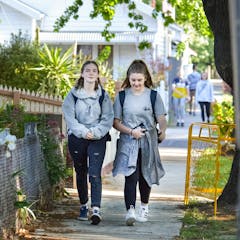
Articles on Community safety
Displaying all articles

Factors such as having supportive family and friends, safer communities, positive school environments and adequate resources, are often associated with more physical activity.

The third report found perpetrators were predominantly male, while victims were predominantly women.

Parents and caregivers are central to promoting child safety. Improving their ability to prevent injury to children is key.

Another world is possible when we defund and reimagine policing as we know it. A review of police budgets could mean more money towards community initiatives.

The provincial government has funding to support non-police safety and well-being initiatives — but 99 per cent of it just supplements police budgets.

Governments impose harsh restrictions to the freedom of sex offenders after their sentence. But there’s no evidence to support that ‘doing more of the same’ improves community safety.

It may seem that having a public register which shows the whereabouts of dangerous people would keep the community safe. But evidence shows public sex offender registers do more harm than good.

Planning matters. The 2005 riots in France started in badly designed housing projects, while innovative planning helped Medellín, Colombia, shed its reputation as the most violent city in the world.

The benefits of walking are widely promoted, but most Australian communities still aren’t walker-friendly. Young people, who rely heavily on walking to get around, are clear about what has to change.

Low-density suburbs can cause social isolation that’s harmful for individual and community well-being. But research confirms we can plan neighbourhood centres so they become vibrant social hubs.

A new study shows an amazingly symbiotic relationship between the community and police in Nigeria: 70% of survey respondents claim that collaboration has brought safety to their communities.

Curbing negative gearing will help get empty housing onto the market. This could go some way to bringing life back to relatively dense urban centres that are oddly lacking intensity of public life.

Many communities struggle with crime, violence and abuse, but they are not all the same. Those that look to local expertise for solutions offer hope in a world where success in preventing violence is rare.

Approaches to crime that rely on punitive methods have proved to be ineffective and counter-productive. Rehabilitation programmes not only prevent crime, but are cost-effective and practical.
